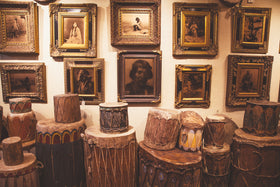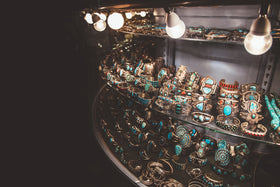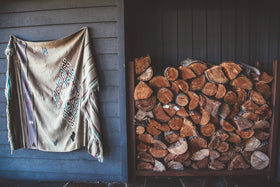History of Navajo Weavings?

Navajo weavings were originally made for use as cloaks, dresses and saddle blankets. Prior to the mid-19th century, the colors were primarily natural brown and white with the occasional addition of cochineal(red) and indigo, which were acquired through trade. When the railroad arrived in the 1880's, there was a nearly tenfold increase in demand for Navajo weavings. Two merchants, C.N. Cotton and John B. Moore, encouraged professional production and marketing. They worked to improve the quality of the Navajo textiles by regulating the cleaning, dying, and weaving, and by providing new designs. Both men refused to deal in commercially produced yarns, instead favoring the hand-spun Navajo yarn with its naturally-occurring browns and whites and the brilliant colors achieved through hand-dyeing.

Traditional Navajo weavers use upright looms with no moving parts. The weaver sits on the floor during weaving and wraps the finished portion of the fabric underneath the loom as it grows. It takes the average weaver anywhere from two months to several years to finish a single textile.
Weaving even plays a role in the Navajo creation myth. “Spider Woman,” a spiritual being, instructed the women of the Navajo how to build the first loom from natural materials, including sky, earth, sun rays, rock crystal and sheet lightning. Then Spider Woman taught them how to weave on it.
Cisco’s has an extensive collection of vintage Navajo weavings including Navajo rugs, and Navajo blankets from the 1870's through 1940, all made of natural and hand-dyed wool.
Click here to view our collection of over 800 authentic Navajo weavings.




